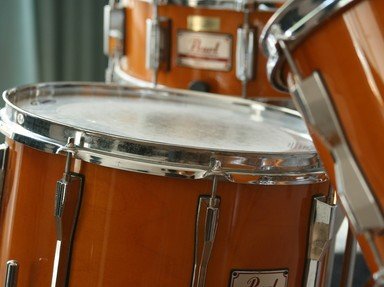Quiz Answer Key and Fun Facts
1. Let's start with the handbell: A tuned bell held by a leather or rubber strap and rung by swinging it. Music set for handbells is played in an unusual way - what's special about it?
2. The simplest form of bell-like sound generator is a metal bar struck by a hammer. Such bars, arranged in xylophone-like fashion make up an instrument that gives a distinct, clear sound of small bells. The instrument's name is a German word even in English, which one?
3. Combining metal bars with pipe-shaped resonators again yields a completely different, mellower bell sound, especially when combined with a simple electrically driven valve in each resonator to achieve a tremolo effect. What is the name of this instrument?
4. If you take the traditional bell shape and flatten it to yield a disc- or bowl-shaped metallic percussion instrument hung vertically, you can again create a completely new range of sounds. Associated with East Asian, especially Chinese music, which of the bell's cousins am I talking about now?
5. Bells do not necessarily need to be made of metal. You can create a reasonable bell ensemble for yourself at home by filling a set of equal wine glasses with various amounts of liquid to tune them, creating a glass harp. While you can play this instrument as true bells by softly striking the glasses with wooden sticks, what is the preferred way of playing a glass harp?
6. Another instrument using metal plates to produce a bell-like sound is the celesta. It is unique among bell-like percussion instruments in the way it is played. Which instrument does it most resemble in shape and play technique?
7. Back to regular bells: Tuned cowbells have also made their way to the classical orchestra, used especially by romantic era composers. Which composer particularly emphasized this instrument in his "Alpine Symphony"?
8. If I take several bells, each tuned to a specific note and mount them to a frame with a mechanic so they can be played via a fist-operated keyboard, I arrive at a melodious and notoriously difficult to play instrument. Which instrument am I talking about?
9. One of the most difficult ways to perform with group of bells is change ringing. One single error by a player can render an entire performance worthless. For a group of seven performers, each ringing one bell, how many strokes are needed to perform a complete peal (one full set of change ringing?)
10. One of the most distinctive orchestral "bell" instruments almost looks like an organ when viewed from the side. The bells are played with hammers, tipped with rawhide or plastic, and have a clear sound. Mike Oldfield made this specific instrument popular in a famous album named after it. What's its name?
Source: Author
WesleyCrusher
This quiz was reviewed by FunTrivia editor
kyleisalive before going online.
Any errors found in FunTrivia content are routinely corrected through our feedback system.
